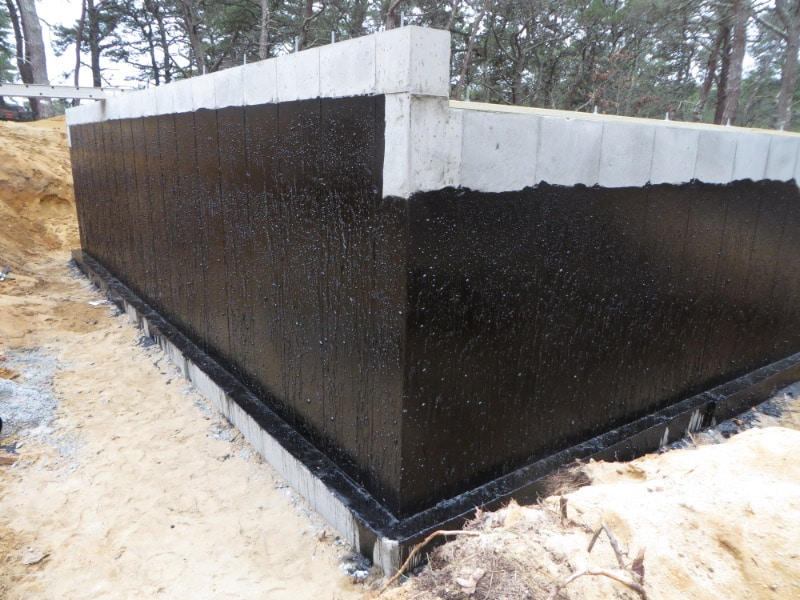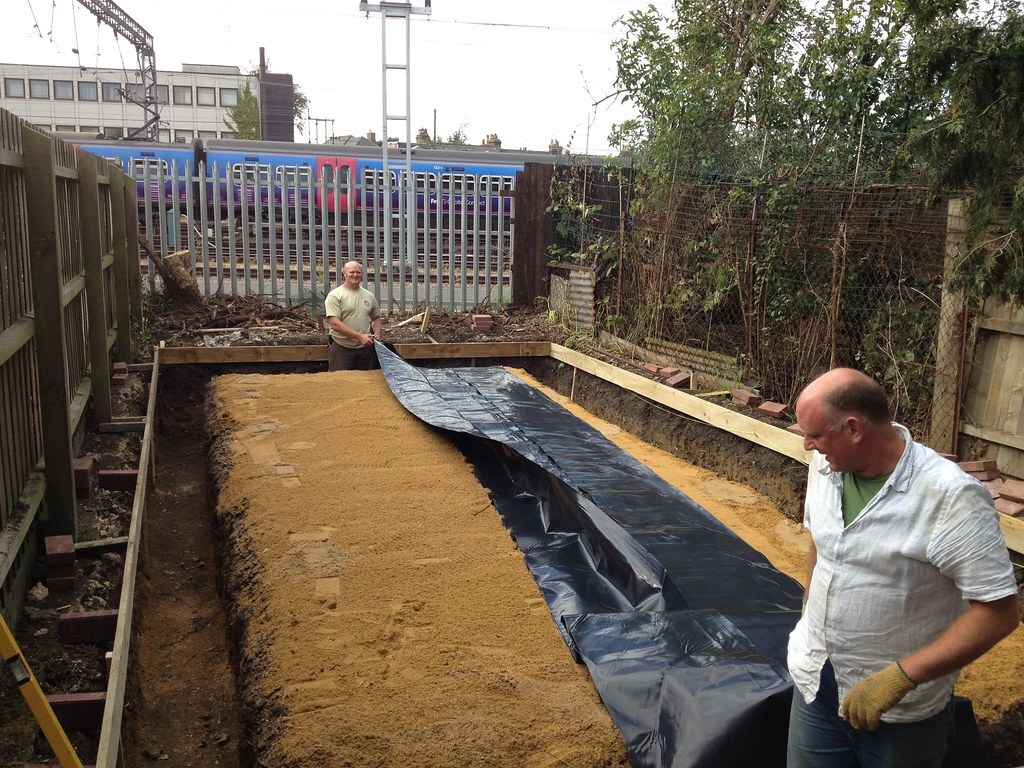Expert insights on dealing with rising damp from damp proofing newcastle
Wiki Article
Checking Out the Various Strategies and Solutions for Effective Damp Proofing
Moisture in buildings presents significant difficulties to both architectural integrity and interior air top quality. Various strategies and services have actually arised to combat this pervasive problem. From conventional damp-proof membrane layers to innovative chemical therapies, each method offers special benefits. Comprehending these choices is necessary for efficient wetness control. Nevertheless, selecting the appropriate option relies on details building problems and demands, triggering additional exploration right into the most effective damp proofing approaches available.Comprehending the Reasons For Moisture
Although dampness can arise from various resources, recognizing these reasons is essential for efficient removal. Commonly, dampness originates from 3 main sources: climbing moist, penetrating wet, and condensation. Climbing moist takes place when groundwater takes a trip up with porous materials, such as brick or stone, typically due to an absence of an effective barrier (damp proofing newcastle). Penetrating damp is normally triggered by external aspects, including roof leaks, malfunctioning seamless gutters, or damaged wall surfaces, enabling water to penetrate a home. Condensation, on the other hand, results from excess dampness airborne, typically exacerbated by bad air flow and temperature level differences, leading to water droplets developing on surfaces. Determining these underlying concerns is vital, as each kind of wetness calls for a customized approach for remediation. Correct evaluation aids in figuring out the most reliable services, eventually protecting the structural honesty of a building and boosting indoor air top qualityStandard Damp-Proof Membrane Layers

Chemical Damp-Proofing Solutions
Chemical damp-proofing services provide an ingenious method to avoiding moisture intrusion in structures. These approaches commonly entail the application of fluid chemicals that permeate masonry and form an obstacle versus increasing damp. Commonly made use of chemicals consist of silanes, siloxanes, and other water-repellent agents that respond with surface materials to develop a hydrophobic layer.The application procedure typically requires exploration openings into the wall surfaces, infusing the chemical service, and allowing it to heal. This technique is particularly useful for older frameworks where conventional damp-proof membrane layers might be impractical. Chemical damp-proofing can be less turbulent and much more cost-effective than substantial renovation projects.While reliable, these services depend on correct application and environmental problems for peak performance. mould treatment newcastle. Normal maintenance and surveillance are necessary to assure the longevity of the damp-proofing therapy. Overall, chemical damp-proofing represents a functional option for securing structures against moisture-related damagesDental Caries Wall Building Strategies
Cavity wall surface building and construction techniques provide countless benefits, particularly in wetness control and power performance. By incorporating an air gap between 2 layers of stonework, these wall surfaces effectively alleviate water access while enhancing insulation. This mix not just secures frameworks from wetness but likewise adds to lowered power intake.Benefits of Cavity Walls
When thinking about efficient moist proofing approaches, the benefits of dental caries wall surfaces attract attention plainly. Dental caries wall surfaces contain 2 different layers, developing an air void that properly reduces moisture infiltration. This layout decreases the danger of moisture, as the outer wall acts as a barrier versus rainfall and water access. Furthermore, tooth cavity walls enhance thermal insulation, which contributes to power performance by minimizing warm loss. They likewise offer sound insulation, aiding to develop a quieter interior atmosphere. Furthermore, the air void permits air flow, which aids in moisture control and lowers the chance of mold and mildew growth. These benefits not just boost the general convenience of a structure but additionally add to its longevity and architectural stability.Moisture Control Approaches
Efficient dampness control methods are crucial in dental caries wall building to assure long-term defense against moisture. One key method includes the unification of weep holes, which assist in water drain from the cavity, protecting against accumulation. Furthermore, the usage of breathable membranes can assist take care of go to the website moisture levels while enabling entraped vapor to leave. Appropriate positioning of insulation is also vital, as it needs to not block drainage paths. Making sure that the external fallen leaves of the cavity wall are constructed with waterproof products enhances overall resilience. Regular maintenance checks are necessary to recognize any kind of obstructions or damage early, safeguarding the framework's honesty. Eventually, a combination of these strategies develops a robust protection against wetness breach in cavity wall surfaces.
Insulation and Power Effectiveness
Insulation plays a vital role in improving energy efficiency within dental caries wall surface construction. By integrating protecting products, these walls produce a thermal obstacle that minimizes warmth loss and minimizes power consumption. Reliable insulation not just helps preserve a stable indoor temperature however also minimizes the risk of dampness, as it stops condensation within the wall surface dental caries. Numerous techniques, such as making use of inflexible foam boards or mineral wool, can be employed to accomplish optimal insulation efficiency. Additionally, correct installment is necessary to ensure that gaps and voids are decreased, which can otherwise jeopardize power performance. Eventually, a well-insulated dental caries wall surface contributes considerably to general sustainability and lowers heating & cooling prices for house owners.External Damp Proofing Approaches
External wet proofing methods are crucial for securing structures from wetness seepage. see page Two reliable methods consist of the application of waterproof membrane layers and the installation of French drains. These remedies assist minimize water accumulation and maintain the integrity of buildings.Waterproof Membrane Layer Application
While various techniques exist for protecting against wetness access, the application of waterproof membranes stays a very effective outside wet proofing technique. These membranes are typically made from materials such as polyethylene, rubber, or customized asphalt, providing a robust obstacle versus water infiltration. The installation process includes using the membrane layer to the exterior surfaces of foundations or wall surfaces, ensuring complete protection to stop leakages. Proper adhesion and sealing at joints are vital to making the most of efficiency. Water-proof membrane layers can be used in various forms, including liquid finishings and sheet membranes, permitting flexibility based on the specific requirements of the structure. This method not only protects buildings from dampness but also enhances their longevity and architectural honesty.French Drainpipe Installment
One reliable technique for handling groundwater and stopping wetness build-up around a building's foundation is the installment of a French drainpipe. This water drainage system is composed of a trench filled up with gravel and a perforated pipe that reroutes surface area water away from the foundation. Proper installment calls for cautious planning, ensuring that the drainpipe inclines away from the structure to facilitate excellent water circulation. Furthermore, the location of the drainpipe is essential; it must be positioned in locations susceptible to pooling or excess dampness. Normal maintenance, consisting of clearing up debris from the crushed rock and making sure the pipe remains unhampered, is vital for long-term performance. Eventually, a well-installed French drain can substantially decrease the risk of water-related problems in foundations and cellars.Interior Waterproofing Strategies
Interior waterproofing methods are important for safeguarding a structure's interior from wetness infiltration and possible water damages. These techniques typically entail the application of specialized materials and methods developed to create a wetness obstacle within the structure. One common approach is making use of waterproof coatings or sealers on walls and floorings, which protect against moisture from passing through surfaces.Additionally, mounting interior drainage systems, such as sump pumps, can properly take care of water accumulation in cellars and crawl spaces. One more method involves making use of vapor obstacles, which are set up to inhibit dampness motion from the ground right into living spaces.Moreover, resolving any type of splits or gaps in wall surfaces or foundations with appropriate sealers assures a comprehensive defense against water breach. By applying these interior waterproofing methods, homeowner can significantly decrease the risk of mold growth, architectural damages, and other moisture-related problems. Appropriate execution of these methods is crucial for long-term protection and structure integrity.Regular Maintenance and Inspection Practices
Routine maintenance and examination techniques are vital for assuring the long-lasting performance of damp proofing options in any structure. Routine checks allow residential or commercial property owners to recognize very early indications of moisture breach, such as peeling off paint, mold development, and mildewy smells. These signs can indicate underlying problems that need instant attention.Inspections must be conducted at the very least annually, focusing on at risk areas like basements, crawl areas, and exterior walls. During these assessments, homeowner must analyze sealers, water drainage systems, and air flow to verify they work correctly.Additionally, preserving downspouts and seamless gutters is vital, as clogged systems can cause water build-up near the foundation. Carrying out a routine maintenance schedule, together with prompt fixings, can considerably extend the life-span of wet proofing measures and secure the architectural stability of the structure. Positive steps inevitably add to the general health check and wellness of the living setting.Frequently Asked Concerns
How Much Time Does Damp Proofing Commonly Last?
The period of wet proofing performance varies, normally lasting in between 20 to half a century. Factors such as application quality, environmental conditions, and upkeep techniques considerably affect the long life of the moist proofing therapy.
Can I Damp Proof My Home Myself?
The private contemplated the expediency of do it yourself damp proofing. With proper research study and the appropriate products, it is feasible. Nevertheless, they additionally recognized the importance of expert guidance to assure durable effectiveness and stop future problems.What Are the Indications of Ineffective Damp Proofing?
Indicators of inefficient moist proofing consist of relentless stuffy odors, visible mold and mildew development, peeling paint, moist spots on wall surfaces, and timber decay - damp specialist newcastle. Homeowners must resolve these problems without delay to prevent additional damage and health worriesDoes Damp Proofing Affect Indoor Air Top Quality?

How Much Does Expert Damp Proofing Cost?
Expert moist proofing expenses differ substantially, typically ranging from $1,000 to $5,000 depending upon the property's dimension, the level of the wet problem, and picked techniques. Each scenario needs a tailored analysis for accurate rates. Typically, wetness originates from 3 main resources: increasing wet, permeating wet, and condensation. When thinking about reliable moist proofing approaches, the advantages of dental caries walls stand out plainly. External moist proofing methods are necessary for protecting frameworks from dampness infiltration. While different methods exist for stopping dampness ingress, the application of water resistant membrane layers remains an extremely reliable external moist proofing strategy. Signs of inefficient wet proofing include consistent mildewy smells, visible mold development, peeling off paint, wet patches on walls, and timber degeneration.Report this wiki page